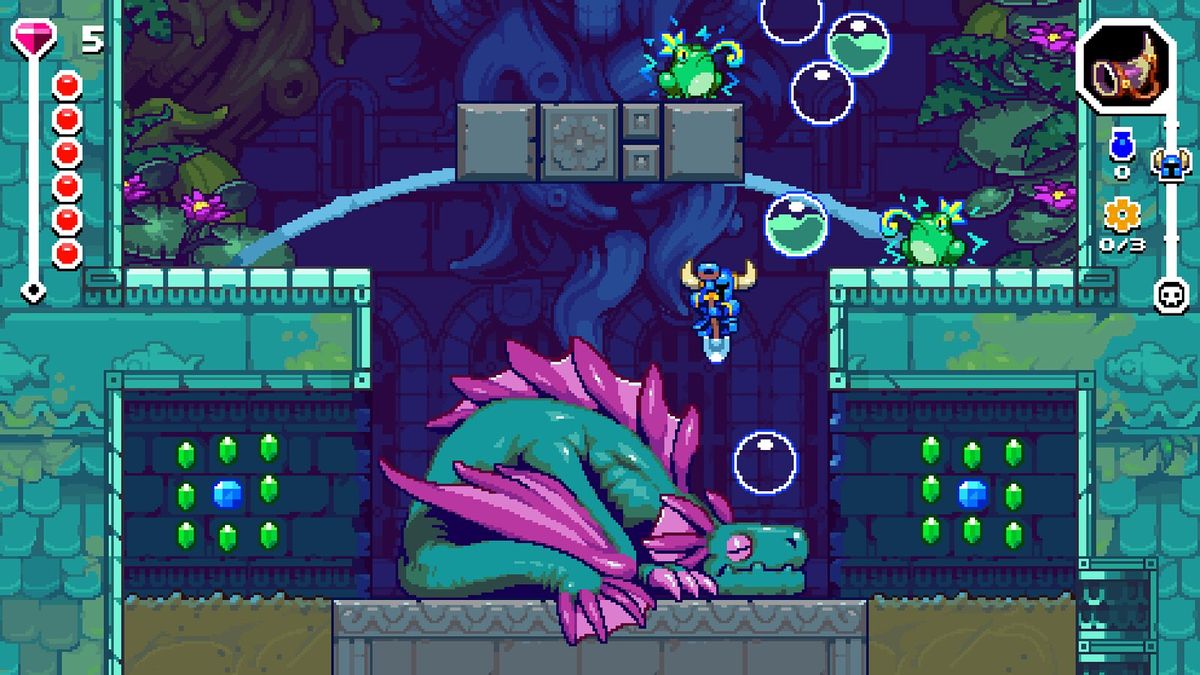In Shovel Knight, the design of enemies plays a significant role in enhancing the game’s engaging platforming and combat mechanics. Each enemy type is crafted with unique behaviors and attack patterns that not only challenge players but also contribute to the overall atmosphere and excitement of the gameplay. Here’s a detailed breakdown of several notable enemy types and their specific behaviors:
1. Beeto
The Beeto is a robust, beetle-like adversary notable for its straightforward aggression. It charges at the player, which can be easily dodged, but it occasionally performs jumps that catch players off guard. This predictable pattern allows players to anticipate attacks and plan their counter moves effectively.
2. Birder
Flying enemies like the Birder add a vertical challenge to encounters. They swoop down to strike, often accompanied by projectile drops, creating a layered threat that requires players to stay mobile and aware of their aerial surroundings.
3. Wizzem
Wizzems introduce magical projectiles into the combat mix. Their ability to time attacks forces players to learn and adapt to their magical patterns, making navigation and timing crucial to avoid damage.
4. Propeller Rat
This cunning rat uses a spinning propeller for its mobility, dynamically tracking the player’s movements. The Propeller Rat’s design necessitates quick reflexes and strategic positioning, challenging players to outmaneuver it.
5. Boneclang and Boneclang Honcho
These skeletons wield weapons and provide a direct melee challenge. With the Boneclang Honcho variant proving tougher, players must adjust their combat strategies to deal with their increased resilience and attack frequency.
6. Hoverhaft and Hover Meanie
Aerial fighters, equipped with axes, attack in swooping motions. Their patterns introduce a challenge in dealing with airborne foes and demand a mix of agility and precision to overcome.
7. Moler
Moler enemies emerge unexpectedly from the ground, adding an element of surprise that can disrupt players’ strategies. Their erratic appearances keep players on their toes.
8. Slimulacra (Slimes)
These creatures move unpredictably, jumping in erratic patterns. Their behavior can make them challenging to defeat, requiring players to stay alert and adapt their movements accordingly.
9. Liquid Samurai (Swordsman and Archer)
The Liquid Samurai class exemplifies skill-based combat, with precise melee and ranged attacks that force the player to remain vigilant and tactical in positioning.
10. Tadvolt, Mantar, Gobcano
These enemies utilize elemental attacks and ranged capabilities that test the player’s adaptability. Each brings a distinct challenge, emphasizing the need for strategic planning.
11. The Big Creep and The Alchemeister
As larger foes or minibosses, they exhibit more complex attack patterns, combining both melee and ranged assaults. Their multi-phase battle approaches create chaotic scenarios requiring players to continually adapt their strategies and maintain a high level of awareness.
Conclusion
Shovel Knight masterfully integrates enemy design that balances classic platformer simplicity with modern complexity. The varied attack patterns and dynamic behaviors of the enemies ensure that each encounter remains fresh and engaging. The need for timing, positioning, and strategic planning adds depth to the gameplay, making it a rich experience in both challenge and satisfaction. Such design choices highlight the care taken in creating a game that pays homage to its roots while innovating to keep the gameplay compelling and varied. Players who embrace these dynamics are rewarded with a satisfying blend of nostalgia and inventive combat challenges.






Leave a Reply